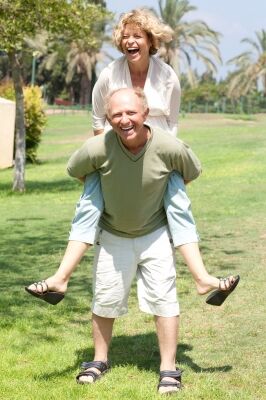Aging
Active Living in Later Years
Where we live affects our physical activity and our friendships.
Posted March 6, 2013 Reviewed by Lybi Ma

I haven’t given much thought to where I’ll spend my post-retirement years, should I be lucky enough to reach them. However, recent research from The University of Western Australia has me considering this very question.
Dr. Andrea Nathan and colleagues have explored features of retirement villages that influence residents’ social participation and physical activity (Nathan et al., 2012). In Australia, the term ‘retirement village’ refers to housing arrangements that allow seniors to live independently, albeit with a number of support services and opportunities for social interaction (Jones et al., 2010).
Given physical activity often declines with age, environments that support daily exercise can play an important role in ensuring seniors retain vital, active lives. Seniors are the least physically active population group, with one study reporting that only 2.4 percent of older Americans participate in sufficient amounts of physical activity (Troiano et al., 2008). Physical activity levels are also affected by social environments, such as seeing others engage in activity and the presence of supportive friends and family (Nathan et al, 2012).
One of Dr. Nathan’s most salient findings was the importance of locating villages close to previous and familiar neighborhoods. Despite the potential for retirement villages to enhance opportunities to make friends and increase social interaction, residents who relocated further from their original home were less likely to interact socially than those who lived nearby.
These findings reflect the opinions of people in my own life who live in retirement villages. While their close proximity to other residents has provided an increased sense of security, their strongest relationships remain with people living outside the village. One friend noted that for some residents in her retirement village, the initial lure of a beachside setting was not strong enough to counteract the long distance from friends and family, particularly as they aged and became less independent.
Part of the appeal of many retirement villages is that they contain a number of amenities, such as communal meeting places, pools, and gyms. Not surprisingly, Dr. Nathan and colleagues found the presence of amenities within the village was positively associated with social interaction.
Similarly, amenities within and surrounding retirement villages directly affected physical activity levels. Residents who perceived destinations to be in close proximity were more inclined to walk for transport. When distance was measured objectively, destinations in close proximity were also important for achieving sufficient amounts of physical activity at an intensity that produced health benefits. The researchers concluded that to support physical activity opportunities, retirement villages need to be located in neighborhoods where destinations and public transport are within distances that older people perceive as walkable.
Personally, I’m attracted to the benefits of residing in a retirement village, particularly the ability to balance independent living with nearby companionship and support. However, my opinion is undoubtedly influenced by the people I know who have found the advantages of living in retirement villages far outweigh the costs. And while there are still some years before I decide on my post-retirement residence, I’m hoping a retirement village that is close to family and friends may be one of the options available to me.
Photo credit
Image by Photostock at FreeDigitalPhotos
References
Nathan, A., Wood, L., and Giles-Corti, B. (2012). Exploring Social-Ecological Correlates of Active Living in Retirement Village Residents. Journal of Aging and Physical Activity, in press.
Jones, A., Howe, A., Tilse, C., Barlett, H.P., & Stimson, R. (2010). Service integrated housing for Australians in later life - AHURI final report no. 141. Melbourne: Australian Housing and Urban Research Institute, Queensland Research Centre.
Troiano, R., Berrigan, D., Dodd, K., Masse, L., Tilbert, T., & McDowell. (2008). Physical Activity in the United States Measured by Accelerometer. Medicine and Science in Sports and Exercise, 40(1),181-188.
McDonald, J. (1997). Community Participation in an Australian Retirement Village. Australian Journal on Ageing, 15(4), 167-171.


